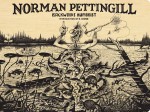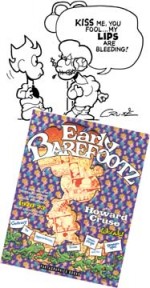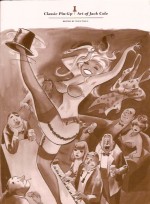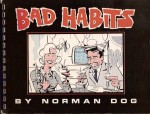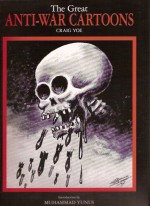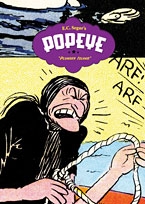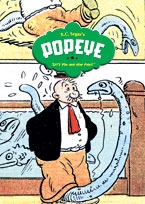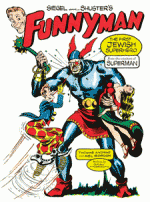
By Thomas Andrae, Mel Gordon, Jerome Siegel & Joe Shuster (Feral House)
ISBN: 978-1-932595-78-9
The comics industry owes an unpayable debt to two Jewish kids from Cleveland who were in the right place at the right time and were able to translate their enthusiasm and heartfelt affection for beloved influences and delight in a new medium into a brand new genre which took the world by storm.
Writer Jerome Siegel and artist Joe Shuster were a jobbing cartoonist team just breaking into the brand new but ailing comic-book business with strips such as ‘Henri Duval’, ‘Doctor Occult’ and ‘Slam Bradley’ when they rejigged a constantly rejected newspaper strip concept into the greatest sensation of the Age.
Superman captivated depression-era audiences and within a year had become the vanguard of a genre and an industry. In those early days the feature was both whimsical and bombastic, as much a gag strip as an adventure serial, and it was clear the inspired whiz kids were wedded to laughs just as much as any wish-fulfilling empowerment fantasies.
Siegel and Shuster were not well-served by their publishers and by 1946 no longer worked for National Periodicals (today’s DC Comics). In fact they were in acrimonious litigation which led to the originators losing all rights to their creation and suffered years of ill-treatment until an artist-led campaign at the time of the 1978 Superman movie shamed the company into a belated reversal and financial package (consisting mostly of having their names returned to the character’s logo and company medical benefits).
Before this however the pair produced an abortive “Last Hurrahâ€: another unique character based on early influences, but one who sadly did not catch the public’s attention in those post war years when the first super-heroic age was ending. Based broadly on Danny Kaye, Funnyman was a stand-up comedian who dressed as a clown and used comedy gimmicks to battle criminals, super-villains and aliens: first in six issues of his own comic-book and then as a Daily and Sunday newspaper strip.
A complete antithesis to the Man of Steel, Larry Davis was a total insider, no orphan or immigrant, wealthy, successful, accepted and revered by society but who chose to become a ridiculous outsider, fighting for not the common good but because it gave him a thrill nothing else could match. The series was light, beautifully audacious, tremendous fun and sunk like a concrete-filled whoopee cushion.
Here social historians Thomas Andrae and Mel Gordon re-examine the strip in the much broader context of Jewish Identity and racial character, (especially as it applies to Jewish-Americans), and make some fascinating observations and postulates. Following an intriguing preface by author, writer, editor and comics historian Danny Fingeroth this book dissects the history and psychology of the Judaic experience in a compelling series of astoundingly illustrated essays gathered under the umbrellas of Gordon’s ‘The Farblondjet Superhero and his Cultural Origins’ and Andrae’s ‘The Jewish Superhero’.
The former (and Farblondjet translates as “mixed up†or “lostâ€) probes ‘The Mystery of Jewish Humor’, ‘The Construct of Humor in Everyday Jewish Life’, ‘The Old Theories: ‘Laughter-Through-Tears’; ‘A Laughing People’; ‘Outside Observer’ and ‘The Badkhn Theory’ (Badkhn being performers hired to insult, offend and depress guests and celebrants at social gatherings such as weddings or funerals).
‘Characteristics of Modern Jewish Humor’ are subdivided and explored in ‘Aggression’, ‘The Yiddish Language’, ‘Self-Mockery’, ‘Inversion and Skepticism’, ‘Scatology’, ‘Gallows Humor’ and ‘Solipsism and Materialism’ and Gibson’s compelling, contextual potted-history concludes with ‘American- Jewish Comedy Before 1947’ ( when Funnyman debuted) with ‘Weber and Fields’, ‘On the Boards’, ‘The Borscht Belt’, ‘Cartoons and Jokebooks’ and ‘Hollywood Talkies and Syndicated Radio’.
In ‘The Jewish Superhero’ Andrae examines Siegel and Shuster’s possible influences; everything from German expressionist cinema masterpiece ‘The Golem: How He Came into This World’ to the real-life strongman Sigmund Breitbart, a Polish Jew who astounded the world with his feats in the early 1920s. On his American tour he appeared in Cleveland in October 1923. Siegel, a local resident, would have been nine years old…
‘Funnyman, Jewish Masculinity and the Decline of the Superhero’ then explores the psychology and landscape of the medium through the careers and treatment of Siegel and Shuster in ‘The Birth of Funnyman’, ‘The Body Politic’, ‘The Schlemiel and the Tough Jew’, ‘The Decline of the Superhero’ and ‘Comic Book Noir’ before going on to recount the story of the newspaper strips in ‘The Funnyman Comic Strip’ and ‘Reggie Van Twerp’ (a last ditch attempt by the creators to resurrect their comic fortunes) before the inevitable ‘End Game’…
So far this book has been a compulsive and hugely informative academic work, but in ‘Funnyman Comic Book Stories’ the resplendent fan fun really begins with a full colour section reproducing a selection of strips from the six issue run. ‘The Kute Knockout!’ (Funnyman #2, March 1948) pits the Hilarious Hero against a streetwalker robot built to seduce and rob Johns whilst ‘The Medieval Mirthquake’ (Funnyman #4, May 1948) propels the Comedy Crusader back to the time of Camelot. From the same issue comes ‘Leapin’ Lena’ as Funnyman tackles a female bandit who can jump like a kangaroo and #5 (July 1948) has him chasing a worrying new crime gimmick in ‘The Peculiar Pacifier’.
Also included are the striking covers of all six issues, the origin of Funnyman from #1, lots of splash pages and a selection of Shuster’s Superman art, but the most welcome benefit for collectors and collectors is a detailed précis of the entire run’s 20 tales.
The same consideration is offered for the newspaper strips. As well as similar synopses for the Sundays (12 adventures spanning October 31st 1948 to the end of October 1949) and the Dailies (another dozen larks beginning October 18th 1948 and ending September 17th 1949) there are 11 pages of full colour Sunday sections and the complete black and white ‘Adventure in Hollywood’ (December 20th to January 12th 1949) to adore and marvel over.
Like Funnyman this book is an odd duck. Whereas I would have loved to see the entire output gathered into one volume, what there is here is completely engrossing: a wonderful appreciation and compelling contextualization of genuine world-altering pioneers. This is a fabulous book with an appeal that ranges far beyond its possibly limited comic-fan audience.
Siegel and Shuster’s Funnyman © 2010 Thomas Andrae and Mel Gordon. All rights reserved.

